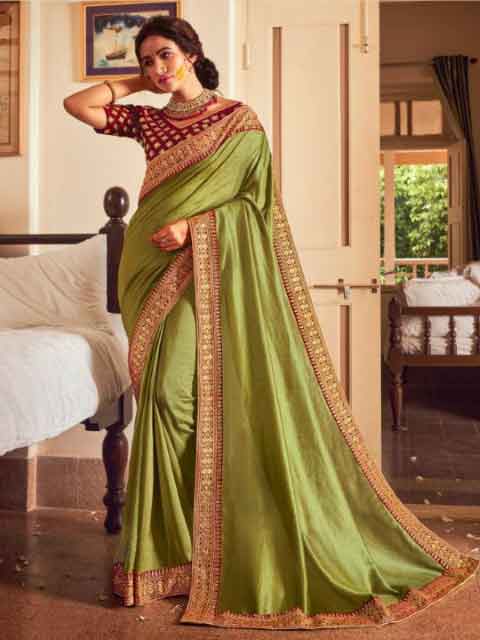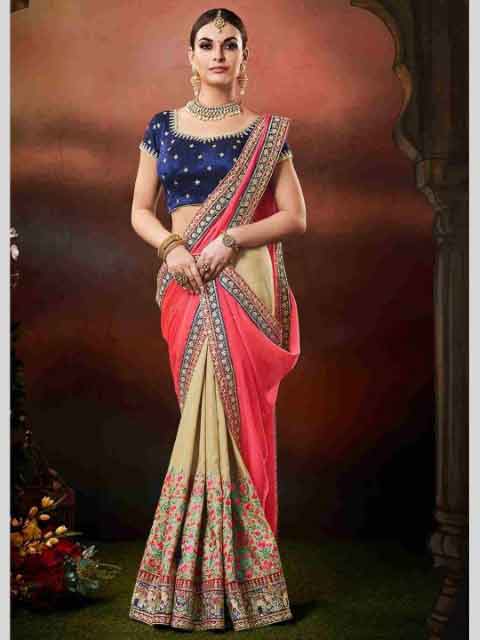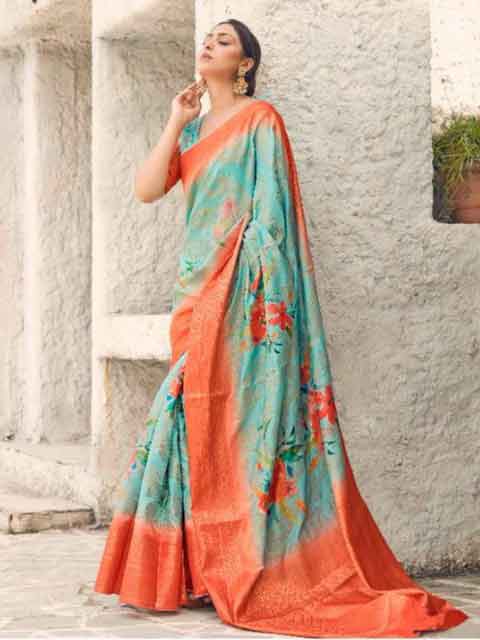The saree holds a special place in the heart of Indian fashion and we’re not sorry about it! It’s one of those things that make you feel incomplete when you don’t have multiple varieties in your wardrobe. It’s popular, timeless, trendy, traditional, and irresistibly stylish.
We love and adore the Indian saree. But the point of this post is to discuss the place and significance of the saree in Indian ethnic fashion and how this iconic dress has mesmerized people across the world and through different generations. Namaste!

What makes a good saree?
The saree has evolved across generations.
We explore the history of the saree in the latter part of this post. But before we dig deeper, we must be clear on what makes a beautiful or good saree.
The saree is basically a long piece of fabric, usually unstitched, ranging from 3.5 to 9 yards, and draped around the body in layers. It is worn alongside a petticoat and blouse and Indian women love it for the comfort, ease, and effortlessly chic appearance.
Now that we’re clear on what a saree is, what makes a good saree?
Is it the fabric, design, or the embroidery and embellishments? For most women we know that are crazy about this iconic piece of Indin fashion, it’s often a collection of all of the above.
Most women prefer their saree made from materials like dupion silk, chiffon, georgette, silk, and similar fabric. While some prefer plain sarees with fancy border designs, others go for sarees something more. The best sarees, however, must tick the box for fabric, fit, style, and quality, most importantly.

A story of the saree across generations
The saree has a long history that dates back thousands of years and traceable to the early civilizations of the Indus Valley civilization around 1500 BC.
Just so you know how historical this piece of fashion is, the saree has been mentioned in the Mahabharat and the Ramayana, two of India’s most legendary epics.
That said, there is credible evidence showing that women of the ancient Indus Valley civilization worn a long piece of clothing around their bodies that had a striking resemblance to the modern-day saree.

The modern-day saree
Indian dynasties across generations are believed to have contributed to the evolution of the saree across generations from the Aryans to the Mauryas, the Guptas, and through the era of the Mughal empire.
It is believed that the modern style of saree with a blouse and petticoat only gained prominence after the Mughal empire’s era. Master weavers of that time developed beautiful motifs and embellishments and did this magic on rich fabrics that were initially only available to the aristocratic class.
Modern-day sarees attained their cultural, traditional, and aesthetic values from years of evolution of this iconic dress and the priceless contributions of master-weavers, dyers, farmers, designers, artisans, and other craftsmen.
Importance of saree in Indian fashion
The saree has become a global fashion commodity, as it should.
But it still holds a sacred place of great prominence in the heart of Indian fashion and culture. Different states, tribes, and ethnic groups of India have evolved their own way of making and draping the saree. The making of this outfit often requires special kinds of stitching, weaving, dyeing, and altogether, a great deal of artistry.
The saree has become a symbol beyond fashion in India. Despite the flurry of western dresses being introduced into the Indian fashion scene, the saree has effortlessly managed to hold its own as one of the most significant pieces of Indian ethnic fashion. Aside from the beauty of a good saree, it’s also tied to various beliefs and traditions.
Read more: Salwar Suit Fabrics: Which Fabric is Right for You!
In some cultures, women may be seen covering their head with the pallu often in reverence tothe elderly. While performing chores, you’ll see them drape the saree over their shoulders. The saree is a common sight at weddings, religious ceremonies, and other big events. Till today, it is still the most important bridal outfit for brides in India.

How the saree continues to win the hearts of billions
The saree continues to win the hearts of billions within and outside India.
This down to its sheer elegance, simplicity, and versatility. Sarees become a favorite among the general Indian public, overcoming ethnic and religious barriers. It’s not uncommon for Christian brides to wear modest white sarees inplace of the traditional white wedding gown.
Sarees exude this aura of elegance and royalty.
The dresses perfectly compliments the female body frame to highlight the body’s natural curves and amplify a lady’s beauty and appearance, effortlessly. Along with the obvious aesthetic benefits, the saree also had deeper positive connotations.

Sarees carry deeper meanings
For example, many of the distinctive colors and designs usually featured on sarees carry certain meanings synonymous to the traditions and beliefs of certain parts of India.
While peacock designs tend to represent physical and emotional strength, fish and paisley is synonymous with fertility, children, and abundance of food. For colors, while blue sarees often stand for calm, peace, and serenity, red colored sarees represnet passion and dominance and are more popular at weddings, parties, and special occasions.
Where to buy the best sarees online
Now that you’ve seen just how much the saree means, perhaps you’re already anxious to cop one or more for yourself. We offer the best Indian saree dresses here at Fabricoz. These sarees are made to measure, made from high-quality fabric, and sewn made with great precision and attention to detail.
We also offer other Indian dresses from salwar kameez to lehengas and more to help you channel your inner beauty. These dresses are made with great artistry and finesse by some of the most experienced ethnic Indian fashion designers. What more? We deliver across the US, EU, and anywhere in the world, fast, and for free!
